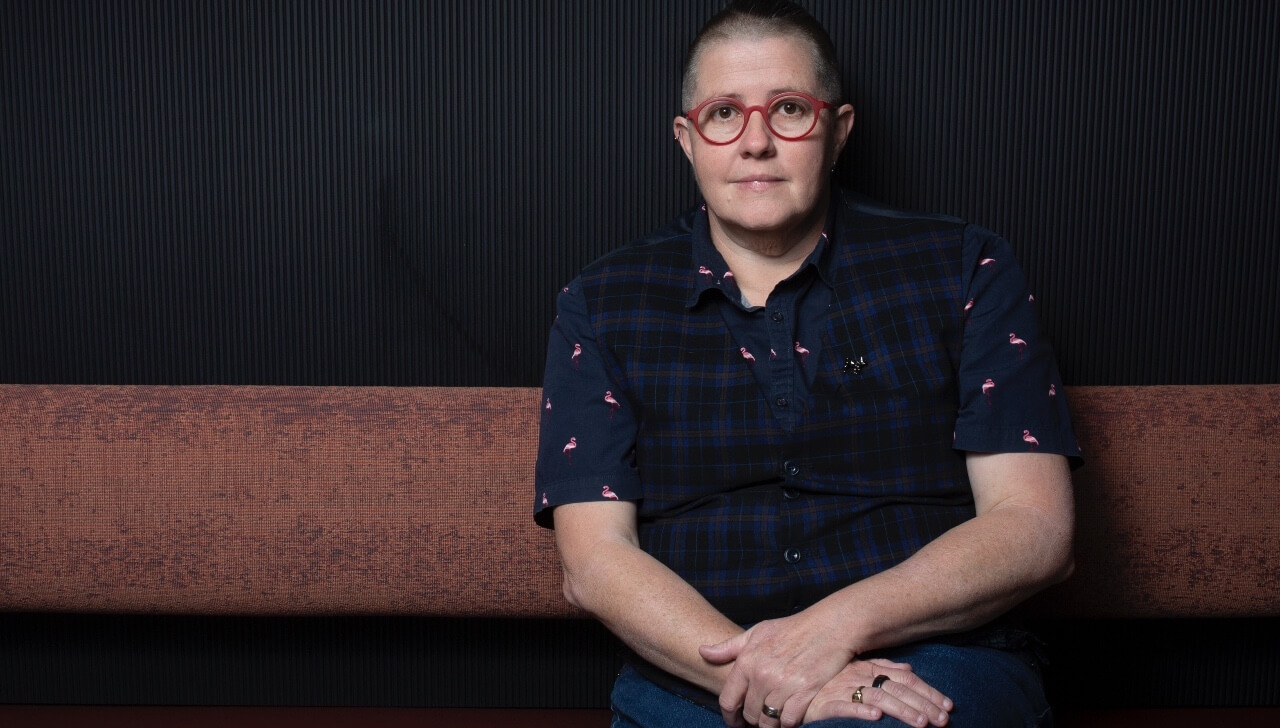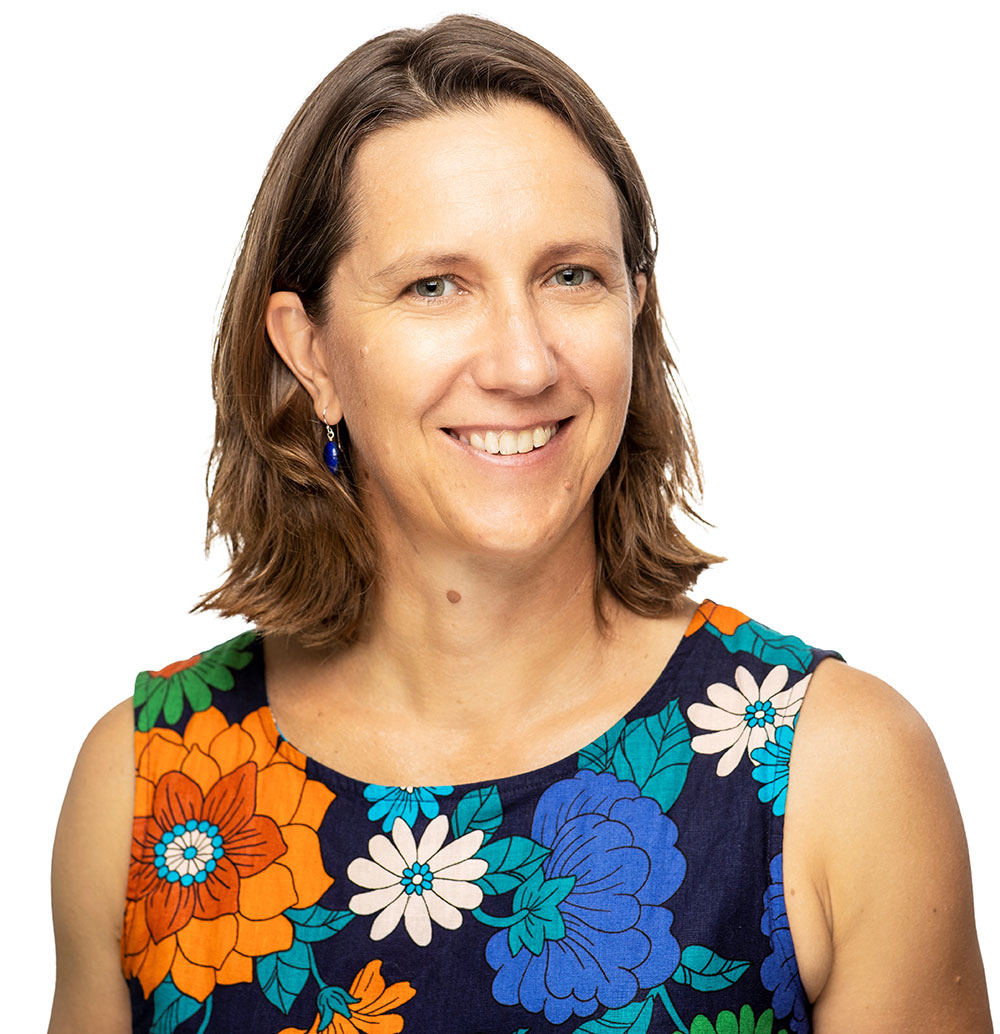No longer the profession which ‘doesn’t touch people’, pharmacists are now one of Australia’s leading vaccinators.
So how did we get here in 10 short years? And where are we going next?
Australian Pharmacist looks back on how it all started – chronicling the entire pharmacy vaccination timeline in the table below – and where pharmacist vaccination is heading in the future.
| Date | Vaccination milestone |
|---|---|
| December 2013 | Pharmacy Board of Australia announced vaccination was within the current scope of practice of pharmacists |
| April 2014 to 30 September 2014 | Queensland Pharmacist Immunisation Pilot (QPIP) Phase 1: - 80 pharmacies - 10,889 influenza vaccines administered |
| November 2014 | Western Australia: Legislative change to allow pharmacist immunisers to administer influenza vaccines |
| February 2015 | Australian Pharmacy Council develops vaccination training accreditation standards |
| ~ 2015 | Pharmaceutical Society of Australia develops Practice Standards for Pharmacist Administered Immunisation |
| March 2015 to April 2016 | Queensland Pharmacist Immunisation Pilot (QPIP) Phase 2: - 200 pharmacies - 22,835 influenza, 1834 pertussis and 33 measles vaccines administered - Addition of pertussis and measles vaccines |
| 2015 | Pharmacist administered immunisation in South Australia and Western Australia introduced |
| June 2015 | NSW: Pharmacist administered immunisation for influenza introduced |
| March 2016 | ACT: Pharmacist administered immunisation for influenza introduced |
| March 2016 | Queensland: Pharmacist immunisation for influenza introduced |
| April 2016 | Tasmania: Pharmacist immunisation for influenza introduced |
| August 2016 | Victoria: Pharmacist immunisation introduced in Victoria, including influenza and pertussus vaccines. NIP and state government program vaccines available through community pharmacies – the first jurisdiction in Australia to do so |
| January 2016 | Northern Territory: Pharmacist immuniser formulary expanded to include pertussis and measles (MMR) |
| May 2017 | Queensland: Five state government departments fund workforce influenza vaccination program through community pharmacies |
| June 2017 | PSA adds immunisation services into the Professional Practice Standards for pharmacists (Version 5) |
| June 2017 | ACT: Pharmacist immuniser formulary expanded to include pertussis (dTpa) |
| October 2017 | Training: Over 6,790 pharmacists had completed PSA’s pharmacist immuniser training programs. This meant over 22% of Australia’s 30,622 registered pharmacists (2017) had become pharmacist vaccinators through PSA |
| July 2018 | Tasmania: Pharmacist immuniser formulary temporarily expanded to include meningococcal vaccines to support public health outbreak response |
| August 2018 | Advocacy: Nationwide polling (n=1023) by YouGov Galaxy finds 64% of Australians support pharmacists administering common vaccines, with greater convenience cited as a benefit by 62% of respondents |
| August 2018 | Victoria: Pharmacist immuniser formulary expanded to include measles (MMR) vaccine for people 16 years of age and above. Pharmacist immuniser formulary reduces minimum age for all permitted vaccines from 18 years of age to 16 years of age |
| October 2018 | NSW: Pharmacist immuniser formulary expanded to include pertussis (dTpa) and measles (MMR) for people from 16 years of age from 1 January 2019 |
| April 2019 | Queensland: Pharmacist immuniser formulary lowers minimum age for vaccines to 16 years age |
| April 2019 | ACT: Pharmacist immuniser formulary lowers minimum age for vaccines to 16 years age |
| May 2019 | Tasmania: Pharmacist immuniser formulary lowers minimum age for influenza vaccine to 10 years of age |
| August 2019 | Western Australia: Pharmacist immuniser formulary expanded to include pertussis, measles and meningococcal (ACWY) |
| September 2019 | Tasmania: Pharmacist immuniser formulary expanded to include dTpa and MMR (16+ years age only) |
| October 2019 | Victoria: Pharmacist immuniser formulary lowers minimum age for influenza vaccine from 16 year age to 10 years age |
| February 2020 | Queensland: Pharmacist immuniser formulary expanded to include travel vaccines, including cholera, Haemophilus influenza type B; hepatitis A; meningococcal ACWY; poliomyelitis to people aged 16 years and above. Pharmacist immuniser formulary reduces minimum age for influenza vaccines to 10 years age |
| March 2020 | NSW: Pharmacist immuniser formulary lowers minimum age for influenza vaccine to 10 years age |
| March 2020 | South Australia: Pharmacist immuniser formulary lowers minimum age for influenza vaccine to 10 years age |
| March 2020 | Victoria: Pharmacist immuniser formulary expanded to include meningococcal ACWY vaccine. Pharmacist immuniser formulary lowers minimum age for influenza vaccine to 10 years of age. Pharmacist immuniser formulary lowers minimum age for MMR and pertussis vaccine to 15 years age. Pharmacist immunisers permitted to administer vaccines via mobile and outreach services of a hospital, pharmacy or pharmacy depot |
| May 2020 | NSW: Pharmacist immunisers permitted to administer vaccines in additional settings: residential aged care settings, Aboriginal Medical Services, private and public hospitals and community health centres |
| June 2020 | Northern Territory: Pharmacist immunisers permitted to administer vaccines in additional settings: residential aged care settings, Aboriginal Medical Services, private and public hospitals. Pharmacist immuniser formulary lowers minimum age for influenza vaccine from 16 years of age to 10 years of age |
| November 2020 | Western Australia: Pharmacist immunisers permitted to administer vaccines in additional settings: residential aged care settings, Aboriginal Medical Services, private and public hospitals |
| 2021 | State and territory governments progressively authorise pharmacists to administer COVID-19 vaccines. These authorities are revised regularly following changes to vaccination advice (e.g. vaccine brands, eligible age cohorts, booster doses, precautions etc.) |
| April 2021 | NSW: State government extends access to NIP influenza vaccines to include community pharmacies |
| June 2021 | Queensland rural pharmacists become the first community pharmacists to administer COVID-19 vaccines. Community pharmacies in other jurisdictions join the COVID-19 vaccine response in subsequent months |
| December 2021 | Remuneration for COVID-19 booster doses increases from $A16 to $A26 per vaccine administered |
| March 2022 | Tasmania: State government extends access to NIP influenza vaccines to include community pharmacies |
| April 2022 | Queensland: Pharmacist immuniser formulary lowers minimum age for influenza vaccine to 5 years age |
| April 2022 | Western Australia: Pharmacist immuniser formulary lowers minimum age for influenza vaccine to 5 years of age. State government extends access to NIP influenza vaccines to include community pharmacies. Pharmacist immuniser formulary expanded to include: human papillomavirus (HPV), diphtheria-tetanus-acellular pertussis (dTpa), meningococcal ACWY, measles-mumps-rubella |
| May 2022 | Governments in South Australia, Western Australia, New South Wales and Victoria introduce a ‘free influenza vaccine’ program for 2022 where all persons – not just NIP eligible Australians – can access free influenza vaccines in community pharmacies. In addition to funding the vaccine, the state governments also fund the administration fee of these vaccines for the first time. Tasmania makes a similar announcement in early June 2022 |
| May 2022 | South Australia: Pharmacist immuniser formulary lowers minimum age for influenza vaccine to 5 years age |
| May 2022 | NSW: Pharmacist immuniser formulary expanded to include: human papillomavirus (HPV) and meningococcal ACWY (MenACWY) to support School Vaccination Program |
| May 2022 | Victoria: Pharmacist immuniser formulary expanded to include Japanese encephalitis in response to local outbreak |
| October 2022 | South Australia: Pharmacist immuniser formulary expanded to include: Japanese Encephalitis as part of state government program in response to local outbreak |
| October 2022 | Victoria: Pharmacist immuniser formulary expanded to include: mpox as part of state government program in response to global outbreak |
| November 2022 | Western Australia: State government extends access to NIP vaccine access in community pharmacies to all vaccines pharmacist immunisers are authorised to administer |
| November 2022 | NSW: Pharmacist immuniser formulary expanded to include: Hepatitis A, Hepatitis B, Japanese encephalitis, Poliomyelitis, Typhoid, Herpes zoster (Shingrix only) |
| March 2023 | Tasmania: Pharmacist immuniser formulary lowers minimum age for influenza vaccine to 5 years age |
| April 2023 | Western Australia: State government announced free influenza vaccine campaign for 2023 |
| May 2023 | Federal Minister for Health and Ageing announces community pharmacists will be funded to administer NIP vaccines from 1 January 2024 with a $18.85 administration fee. (NIP vaccines are provided to vaccine providers free-of-charge) |
| July 2023 | Queensland: State government announced free influenza vaccine campaign for 2023 |
| October 2023 | NSW: Update to pharmacist immuniser formulary to align with NIP eligibility for shingles vaccine, meningococcal vaccine among other administrative updates |
| October 2023 | Queensland: Pharmacist immuniser formulary expanded to include: Hepatitis B, Varicella (chickenpox), Meningococcal B, Human papillomavirus (HPV), Typhoid fever, Zoster (herpes zoster), and Japanese encephalitis. Pharmacist immuniser formulary lowers minimum age for most vaccines to 2 years of age. Pharmacist immunisers permitted to administer vaccines in additional settings: general practices, Aboriginal or Torres Strait Islander health services, and aged care facilities |
| November 2023 | Queensland: State government announced free influenza vaccine campaign for 2024 |
| November 2023 | Victoria: Community Pharmacist Statewise Pilot of travel health service scheduled to commence, including expanded authority for travel health vaccines |
| November 2023 | Tasmania: Pharmacist immuniser formulary expanded to include: Hepatitis B, HPV, Meningococcal ACWY, pneumococcal, polio, varicella, herpes zoster, Hepatitis A, Meningococcal B. Minimum age lowered for a number of vaccines |
| December 2023 | Western Australia: Pharmacist immuniser formulary expanded to include: Hepatitis B, Herpes zoster, Meningococcal B, polio, pneumococcal and varicella. Minimum age lowered to 5 years for all vaccines |
| December 2023 | ACT: Pharmacist immuniser formulary expanded to include: Haemophilus influenzae, Meningococcal B, Meningococcal C. Minimum age lowered to 5 years for most vaccines |
| December 2023 | Northern Territory: Pharmacist immuniser formulary expanded to include all NIP vaccine. Minimum age lowered to 5 years |
| December 2023 | South Australia: Pharmacist immuniser formulary expanded, lowers minimum age for vaccination to 5 years |
| February 2024 | NSW: Pharmacist immuniser formulary expanded to include: pneumococcal, new RSV vaccine (Arexvy only) |
| April 2024 | Western Australia: Government announced free influenza program |
Beginning with a bang
The Queensland Pharmacist Immunisation Pilot (QPIP) Phase 1 kicked off on 1 April 2014, running for the duration of flu season in 2014 (1 April–30 September), with pharmacists administering influenza vaccinations to 10,889 participants. Key to QPIP’s success was the rapid mobilisation of the pharmacy profession.
Following an invitation from then chief health officer Dr Jeannette Young in late 2013 for the profession’s lead bodies, including PSA, to collaborate on an immunisation trial to ‘help us to determine if a new method of health care delivery is safe and effective for Queenslanders’ – there was very little time to get the original pilot started, said QPIP lead Professor Lisa Nissen FPS.

‘We only had around 4 months to get everything up and running, including training, development, software, research, ethics approvals, steering groups and recruitment of sites,’ she said. ‘Both the profession and the pharmacists in Queensland were incredible.’
The results of Phase 1 were remarkable. Among the 8,000 participants who took part in the post-vaccination survey, 93% were happy to receive their vaccination from a pharmacist going forward.
QPIP Phase 2, which ran from March 2015 to April 2016, rolled out across 200 pharmacies, with the trial expanded to include the measles and pertussis vaccines – setting the stage for pharmacists as a multi-vaccination workforce.
Information sharing with other jurisdictions helped to ensure rapid uptake of pharmacist immunisation nation-wide.
‘We were actively meeting with health departments to share our experiences and outcomes, said Prof Nissen. ‘There was a rolling implementation of influenza vaccination/MMR/dTpa across states because the results and implementation were shared early and transparently.’
Running a large-scale pilot that allowed the safety and effectiveness of pharmacist immunisation to be assessed was also crucial to its acceptance, said Dr Jean Spinks, who co-authored a systematic review with Prof Nissen on the impacts of allowing pharmacists to administer influenza vaccines.

‘Once the results were in from Queensland, it took around 2 years for all the jurisdictions to switch over,’ she said.
Community acceptance of the new vaccinating workforce was also crucial.
‘There was trust in the profession to provide that service safely, which also provided evidence to the government that pharmacist vaccination was accepted by consumers.’
8 jurisdictions doing things differently
While all states had adopted influenza vaccination for pharmacists – as well as pertussis and MMR in most jurisdictions – each state and territory implemented policy differently based on local health system needs.
Victoria was the first (2016) to provide unrestricted access to NIP-funding for permitted vaccines. Tasmania ran a childhood meningococcal vaccination campaign in response to a local outbreak in 2018 (albeit only temporarily) and five Queensland government departments funded employee influenza vaccine programs in community pharmacies (2017).
AP has counted at least 26 changes to regulatory tools in eight jurisdictions that took place between 2015 and early 2020. But the biggest change was yet to come.
A significant boost(er)
What really propelled pharmacist vaccination into the stratosphere was the COVID-19 pandemic.
While pharmacists were not among the first COVID-19 vaccinators, the campaign to protect Australians really got going once community pharmacists were added to the COVID-19 vaccination workforce.
Pharmacists such as Prof Nissen, who was seconded from the Queensland University of Technology into Queensland Health’s COVID-19 team for 18 months, helped to grow and cement pharmacists’ reputation as vaccinators of choice.
‘I set up mass vaccination clinics across the state, developing training programs for health professions to enable them to vaccinate, leading policy and regulation formulation and scope of practice and workforce development,’ she said.
The COVID-19 vaccine rollout proved to be a significant milestone for pharmacist vaccination, – allowing pharmacists to significantly contribute to population health and show their value as a ready and available workforce, said Dr Spinks.
‘It wasn’t just the workforce, it was also the supply and the distribution channels. Community pharmacy offers both, providing a bigger efficiency gain,’ she said.
‘The accessibility to the community and the preparedness of pharmacists to step into the public health emergency with their skills, delivering 10 million vaccines, is unbelievable. Imagine if they were not a workforce in place at that time,’ added Prof Nissen.
As of March 2024, community pharmacists have administered nearly 12 million COVID-19 vaccines, with many more being administered by pharmacists in vaccine hubs, general practice and outreach services.
What does the future hold for pharmacist vaccination?
This year, we saw further confidence in pharmacist vaccination through the rollout of the National Immunisation Program Vaccinations in Pharmacy (NIPVIP) program. Pharmacists can now provide full-funded vaccinations, with most jurisdictions subsequently widening the range of vaccinations that pharmacists can administer.
Now that a significant barrier to access has been reduced, we should see an increase in vaccination uptake in the coming years, said Dr Spinks.
‘You’re going to go to the doctor if you can get your vaccine for free, rather than going to the pharmacist and having to pay out-of-pocket costs,’ she said.
‘But now you can get the same subsidised service in a pharmacy, along with the increased accessibility, that may mean that more people get vaccinated.’
It hasn’t all been smooth sailing, with certain hurdles yet to be overcome. ‘The lack of national consistency is a challenge that is yet to be addressed nationally, not just in terms of vaccination but across the board,’ said Dr Spinks. ‘There’s benefit in harmonising scope of practice change across jurisdictions.’
However, QPIP helped to usher in the development of further pharmacy pilots, such as the Queensland Health Urinary Tract Infection Pharmacy Pilot (UTIPP-Q) – which has similarly expanded almost nation-wide.
‘Having larger, broader changes at a state level enables these types of pilots to happen because regulation updates are required when changing scope of practice,’ she said.
Looking forward, Dr Spinks anticipates pharmacist prescribing will likely be as normalised, accepted and lauded as pharmacist vaccination within the next decade.
‘These things do take time, but the more of these pharmacy prescribing programs are put in place, the process should become easier and faster to accept.’
While leading the implementation of Australia’s first pharmacist vaccination pilot was ‘undoubtedly the proudest professional moment’ of Prof Nissen’s life, she also sees it as a launching pad for our further scope of practice development in prescribing and other areas.
‘Pharmacists are an incredibly underutilised resource in the health system,’ she said. ‘We have much more to give!’



 John Jones MPS, pharmacist immuniser and owner of My Community Pharmacy Shortland in Newcastle, NSW[/caption]
John Jones MPS, pharmacist immuniser and owner of My Community Pharmacy Shortland in Newcastle, NSW[/caption]


 Debbie Rigby FPS explaining how to correctly use different inhaler devices[/caption]
Debbie Rigby FPS explaining how to correctly use different inhaler devices[/caption]




 Professor Sepehr Shakib[/caption]
Professor Sepehr Shakib[/caption]

 Lee McLennan MPS[/caption]
Lee McLennan MPS[/caption]
 Dr Natalie Soulsby FPS, Adv Prac Pharm[/caption]
Dr Natalie Soulsby FPS, Adv Prac Pharm[/caption]
 Joanne Gross MPS[/caption]
Joanne Gross MPS[/caption]





